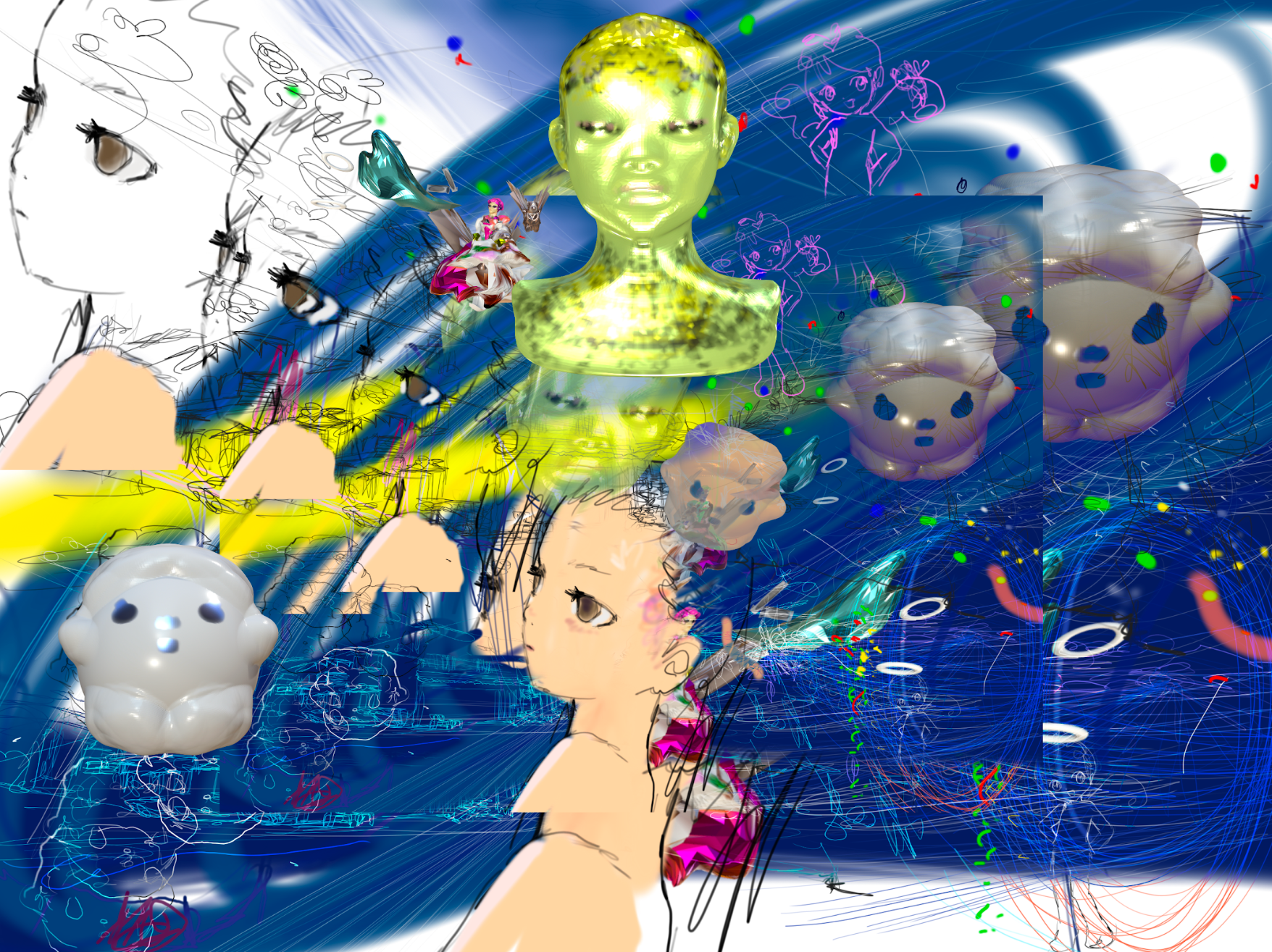Opening October 25–26 at North Six, Minxcenter: Lover, Stop and Daydream, produced by Kive Studio, translates the digital world of Minxcenter into a tangible, sensorial showroom accompanying her long-anticipated capsule release.
Within this space, Minxcenter’s evolving archive unfolds as a landscape of the subconscious, where surrealism, design, and fantasy dissolve into one continuous experience. Visitors are invited to step inside the sensory world of Minxcenter: to taste, smell, and listen; to encounter the textures of designer Minji Son's imagined world, from its artistry, creative direction, and process, revealed in full for the first time. Ahead of the opening, we spoke with Minji about translating the subconscious, world-building through material, and the porous line between dream and reality.

Across disciplines such as canvas, clothing, jacquard fabric, and even digital artworks, what part of yourself do you hope people see reflected in your work?
A thousand year fantasy.
It’s evident that worldbuilding plays a consistent role in your practice, can you speak to some of the early inspirations, themes, or pieces of media that inspired you as you began creating art? How have those inspirations changed over time?
I grew up reading folklore, fables, manhwas. I love the characters and their stories. I would recreate them with new hair and outfits and reinvent the symbols surrounding the lore. The etymology, or the hanja of manhwa means wandering, free, boundless, overflowing picture or drawing. Over time, the adventuring character lives in paintings, objects, the sleeve of a sweater…

Many of your pieces carry traces of the hand, such as drawn lines, stitched appliqué, layered textures. What do you think about the intimacy of touch in both fashion and art?
I think it collapses distance. Layers of texture, color, hand drawn lines, etc. encompass as many elements of a given moment as much as possible. Like a memory texture, a favorite scent.

Figures float between play and melancholy; surreal and intimate. Faces partially hidden, bodies adorned. How do you balance visibility and privacy in your work?
I’d like to think of my characters as an avatar anyone can slip into. Let the subject exist fully in their own myth.

We’re curious about the evolution of the Minxcenter clothing line. What elements, silhouettes, or details do you feel have graduated to a new iteration that encapsulates where you are right now as a designer. Do you feel it’s important that people are able to look back at a living archive of your work?
Before, it was about the immediacy of “the image” on silhouettes, so many of the earlier works were printed on blanks. Over time, I’ve felt the same urge to break out of the surface—the dresses, shirts, and scarves are beginning to feel like square canvases—so I’m leaning into the more unexpected. And yes, in that sense, the archive feels generative, constantly being reiterated across new surfaces and encounters… almost like seeing the history of minxcenter town unfold in real time or something.

Generating characters and environments both from paint to canvas, and pixels to screen, we’d love to learn a little more about what draws you to creating across such vastly different mediums - digital, and physical.
I love switching back and forth because each medium holds a distinct form of expression. They also index the passage of time in very different ways. In painting and drawing, the material residue—the amount of pigment mixed, or the brush left uncleaned—remains visible on the surface. Digitally, it’s simply a click to achieve a certain form. Both are very compelling. “The limits of my language mean the limits of my world.”

From an artist's perspective, we’re curious if you’ve noticed a shift from physical to digital artwork — or even from physical to digital processes that optimize certain aspects of creation? What changes have you observed in the broader cultural landscape around this shift?
Digital work is more accessible than ever before, and the speed of creating, especially with AI tools, makes possibilities unlimited. The shift isn’t just how we make things but how we perceive and value art. So it’s very exciting and more important than ever to cultivate one’s vision. When the medium begins to dictate the idea, something essential is lost.

Have you curated in-person Minxcenter experiences in the past? How has that shifted to the Minxcenter Showroom: Lover, Stop and Daydream, opening this Saturday? What can people expect from this weekend?
I’ve been fortunate to be invited to art shows and retail pop ups but never both together. The show this weekend is the culmination of works from loose paper notes to completed paintings and collections old and new in one space. Working with the Kive team made this exhibition possible!! Please expect both comfort and fascination.
When the exhibition ends and the lights go out, where do you think the “world” of Minxcenter goes?
They go to sleep! And they’ll be there the next morning :)

Through Lover, Stop and Daydream, Minji opens a portal into a world both deeply personal and endlessly iterative. Each surface, scent, and texture becomes a mnemonic for something larger; Minji's invitation to inhabit the Minxcenter universe and linger inside, even after the lights go out.
Minxcenter: Lover, Stop and Daydream will be on view October 25–26, 2025, at North Six, Los Angeles, presented in collaboration with Kive Studio.
Photo Credits: Minji Son
Explore her work: @minxcenter
Composed by Isabel Lotus
